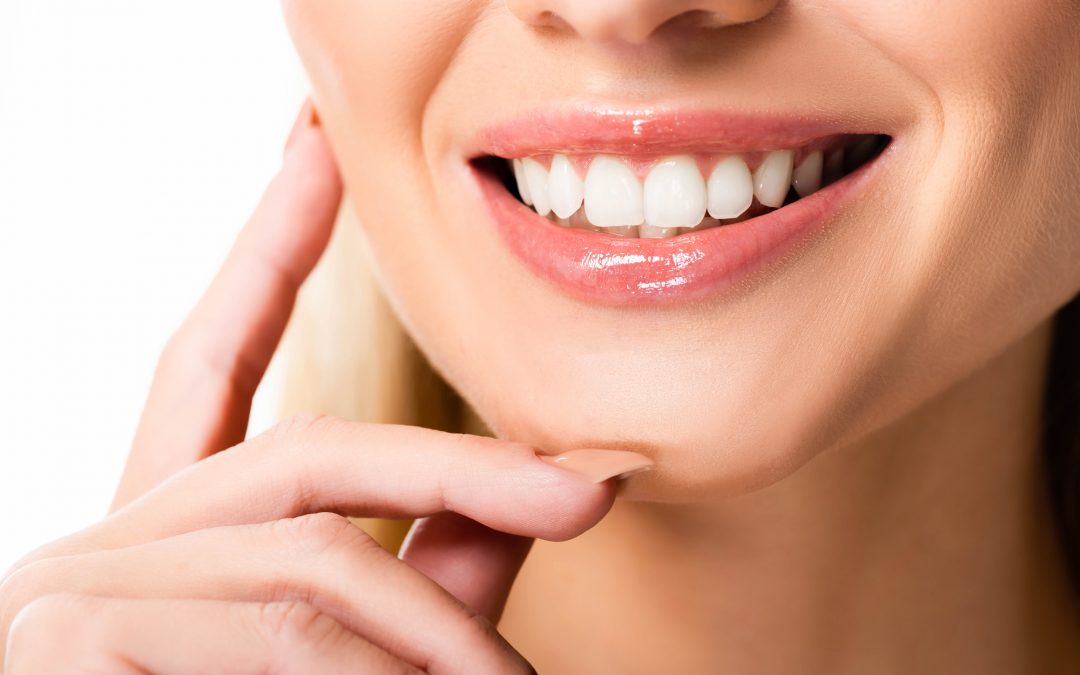
The Art of Dental Beautification: Enhancing Your Smile with Modern Techniques
Dental beautification is a specialty branch that focuses on enhancing the form and function of the teeth and the gums. In this blog post, we will explore the available techniques that dentists use in today’s world to make you turn that frown upside down, fix your smile, get you healthy again, and give you the confidence you deserve. The future of teeth whitening is bright and has been on the list of many people’s dreams for decades and worldwide. Improving dental technology and procedure openness makes achieving tremendous and healthy teeth more possible.
The need for teeth beautification
Teeth whitening is among the most frequently offered dental beautification steps. Our teeth discolor over time due to aging, what we eat and other activities such as smoking and drinking tea and coffee. It is a safe cosmetic dental treatment proven to fade deep and extrinsic stains and provide you with a white smile. The typical whitening techniques include home treatments and professional treatments in the dentist’s office. Walk-in whitening generally uses strong bleach, administered to the teeth briefly, thus giving higher levels of bleaching.
The Need for Aesthetics
Another sophisticated process of aesthetic dentistry is dental veneers. Dental veneers are thin, specialized laminates that fit onto the front side of your teeth to givethem a brand-new look. They can be applied in cases of aesthetical dental problems like discolored, cracked, or misaligned teeth. Veneers are constructed of a long-wearing material, such as porcelain, that mimics the shine of your natural enamel.
The Dental Implants
Another form of beautification of the mouth is called dental implants. A dental implant can be described as a small metal or plastic post implanted into the jawbone to play the role of a missing tooth root. Afterward, the post becomes firmly anchored in the bone, and after an additional period for the final integration, a crown, created according to the thickness of the patient’s jaw, is cemented on top of the post and serves as the final replacement for the missing tooth. Dental implants are permanent prostheses for replacing lost teeth as their survival rate is above 95%. Orthodontic works are also anotheressentialdirection of dental beautification. Regularly enhancing your dental practice can also keep complications away.
Another fantastic technique that has come to the dental practice is laser dentistry. Lasers have been established to have numerous applications. These include flossing, gums reshaping, correcting gum diseases, andremoving tooth decay. Lasers in dental processes can result in less pain, shorter recovery time than those treated by a scalpel, and less bruising. Also, it offers the possibility of carrying out the treatments with even less invasiveness, removing less healthy tooth structure and more sound structure.
To wrap it up, cosmetic dentistry also refers to a vast area that covers the enhancement of smiles and procedures that seek to make them functional. As dentistry technologies and modern methods have improved, maintaining a healthy, gorgeous smile can hardly have been easier. When you speak with your dental professional about what you want to achieve with your teeth, you can agree on the best way to change your smile, which will help you gain more confidence. Hence, please do not wait; come to our practice for the first step to getting the dazzling smile you have always wished for.

Calm and Comfortable: A Guide to Dental Visits for Anxious Patients
For many people, the thought of going to the dentist brings on a wave of unease. Dental anxiety is a common and often intense fear that can make it challenging to maintain oral health. This anxiety may stem from various factors—fear of pain, a negative past experience, or even the sounds and smells of a dental office. However, regular dental care is essential for overall health, and there are ways to make the experience more comfortable and manageable.
In this guide, we’ll explore practical strategies to help you feel calm and comfortable during dental visits. From selecting a dentist with special training in treating nervous patients to using relaxation techniques, there are many ways to create a positive experience at the dentist.
Understanding Dental Anxiety
Dental anxiety is a type of fear or worry that occurs in anticipation of visiting the dentist. For some, the anxiety is mild, causing only a bit of unease. For others, however, the fear is severe enough to keep them from seeking dental care altogether, even if they have a dental emergency or chronic pain.
This avoidance of dental care can lead to serious health issues. Neglecting oral health can result in cavities, gum disease, and even tooth loss, which in turn may affect self-esteem and overall well-being. That’s why it’s crucial to find ways to address dental anxiety head-on.
Choose a Dentist with Special Training
One of the best ways to overcome dental anxiety is to find a dentist with special training in treating nervous patients. These professionals understand the psychological aspects of dental fear and are trained to manage patients who feel apprehensive about treatment. Dentists with this expertise often use advanced communication skills and a gentle approach to create a relaxing environment.
To find such a dentist, ask your local dental practices if they specialize in treating anxious patients. Look for keywords like “anxiety-friendly,” “gentle dentistry,” or “patient-centered care” on their websites. Many practices even highlight these services to assure patients that they’re in good hands.
Communicate Your Fears
Once you’ve found a dentist who specializes in dental anxiety, the next step is to be open about your fears. Let your dentist and dental team know what makes you uncomfortable. Sharing specific triggers—whether it’s fear of needles, the sound of dental tools, or concern about pain—allows your dentist to personalize the experience to meet your needs. For example, some patients are bothered by the noise of the drill, while others are more concerned about discomfort during cleaning or filling.
Many dental offices today prioritize patient comfort and will go out of their way to reduce potential triggers. Communication is key, as it helps build trust with the dental team and ensures they understand how to make the experience as comfortable as possible.
Consider Sedation Options
For patients with moderate to severe dental anxiety, sedation dentistry can be a game-changer. Various sedation options are available to help ease anxiety and allow for a more relaxed experience. Here are a few common types of sedation used in dentistry:
– Nitrous Oxide (Laughing Gas): A mild sedative inhaled through a mask, which provides relaxation without putting you to sleep. Its effects wear off quickly, so you can drive home after the appointment.
– Oral Sedation: A stronger option, this involves taking an anti-anxiety medication before your appointment. It helps you stay calm and relaxed, though you will need someone to drive you home afterward.
– IV Sedation: This is a deeper level of sedation, delivered directly into the bloodstream, providing a semi-conscious state. You may not remember much of the procedure afterward, which can be beneficial for highly anxious patients.
If you think sedation dentistry might help, discuss it with your dentist to determine the best option for your needs.
Practice Relaxation Techniques
Incorporating relaxation techniques can make a huge difference in managing dental anxiety. Here are a few you can try before and during your appointment:
1. Deep Breathing: Practice slow, deep breaths to help calm your mind and body. Inhale for four seconds, hold for four, and exhale for four. Repeat this exercise whenever you feel anxious.
2. Guided Imagery: Visualize a calm and relaxing place, such as a beach or a forest. Close your eyes and imagine the details—how it looks, sounds, and feels. This mental escape can be helpful during uncomfortable parts of the procedure.
3. Progressive Muscle Relaxation: Tense and release each muscle group, starting with your toes and working your way up to your head. This technique reduces muscle tension and anxiety.
4. Bring a Distraction: Some dental offices offer TVs or headphones for music to help keep your mind off the procedure. You can also bring your favorite music or a podcast to focus on during treatment.
Schedule Appointments Strategically
Timing can be an essential factor in managing dental anxiety. Many anxious patients find that morning appointments work best. Visiting the dentist early in the day means you have less time to build up anxiety throughout the day. However, if afternoons or specific times are more calming for you, communicate that to the dental team, and they’ll do their best to accommodate.
Take it One Step at a Time
If you’ve been avoiding the dentist for a while, remember that you don’t have to tackle everything at once. Start with a consultation to get comfortable with the dentist and the office environment. Many practices offer consultations for anxious patients, where you can meet the team, discuss your concerns, and plan future visits without undergoing any procedures.
Taking gradual steps can help you ease into dental care rather than feeling overwhelmed by a full treatment plan all at once.
Celebrate Small Wins
Overcoming dental anxiety is a process, and it’s essential to celebrate small victories along the way. Whether it’s scheduling an appointment, making it through a cleaning, or simply walking into the office, acknowledge each step as an achievement. Reward yourself afterward—a treat, a new book, or a coffee with a friend—to positively reinforce the experience.
Dental anxiety is a real and common challenge, but it doesn’t have to stand in the way of a healthy smile. With the right approach and support from a dentist with special training in treating nervous patients, you can transform dental visits into a manageable and even comfortable experience. Remember to communicate your fears, explore sedation options, practice relaxation techniques, and celebrate your progress. By taking these steps, you’re on the path to achieving both better dental health and greater peace of mind.
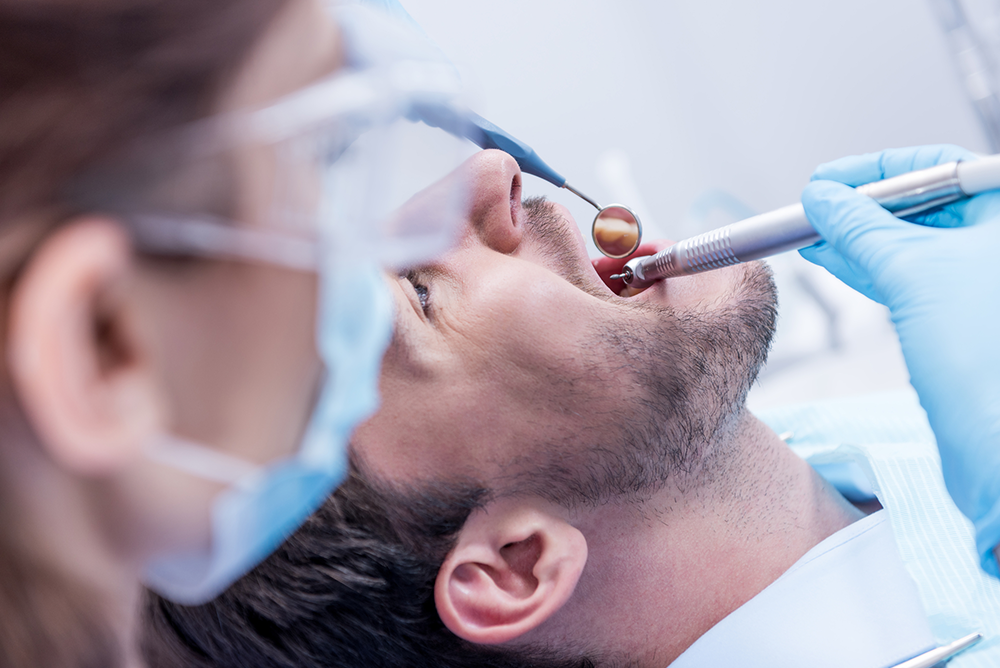
The Importance of Quick Response in Dental Emergencies
Dental emergencies can occur suddenly and without warning, leaving individuals in pain, distress, and uncertainty about what to do next. Whether caused by an accident, sports injury, or underlying oral health issue, quick action is critical in minimising damage and promoting recovery. Emergency dentistry is pivotal in these situations, offering immediate care to address urgent problems. In many cases, delaying treatment can lead to more severe complications, more significant discomfort, and more complex procedures down the road. In this article, we will explore the importance of quick response in dental emergencies, the role of emergency dentistry, and how dental sedation helps manage pain and anxiety during urgent treatments.
Common Types of Dental Emergencies
Dental emergencies can range from minor discomfort to severe injuries requiring immediate attention.
Knocked-Out Tooth: A tooth dislodged from its socket due to trauma or an accident. The likelihood of saving the tooth increases with prompt action.
2. Chipped or Broken Tooth: A cracked or fractured tooth can expose sensitive inner layers, leading to pain, infection, or further damage.
3. Severe Toothache: This may be caused by infection, decay, or an abscess. Intense pain usually signals a need for prompt care.
4. Dental Abscess: A bacterial infection that leads to pus buildup in the tooth or gums, potentially causing significant pain and swelling.
5. Loose Fillings or Crowns: When a filling or crown becomes loose or falls out, the tooth is vulnerable to further damage or infection.
6. Soft Tissue Injuries: Cuts, tears, or punctures in the gums, tongue, or cheeks can lead to bleeding and require immediate treatment.
In any of these cases, prompt attention from an emergency dentist can make a difference in the long-term outcome of your oral health.
The Critical Role of Emergency Dentistry
Emergency dentistry is designed to provide immediate, specialised care for patients experiencing acute dental issues. When dental emergencies arise, delaying treatment can lead to permanent damage, prolonged pain, and more complex procedures that might have been avoided quickly. For example, a knocked-out tooth has the best chance of being saved if reinserted into the socket within 30 minutes to an hour. Beyond this window, the chances of successful reattachment decrease significantly, potentially resulting in the need for expensive dental implants or bridges.
Another example of the importance of quick response is a dental abscess. An untreated abscess can spread the infection to other parts of the body, leading to serious health complications, including sepsis, a life-threatening condition. Emergency dentistry helps contain such infections early on, preventing them from spreading beyond the oral cavity.
Beyond just addressing the immediate problem, emergency dentists provide comprehensive care to alleviate pain and anxiety, stabilise the injury, and plan for any necessary follow-up treatments. Time is of the essence in most dental emergencies, and having a plan for where to go and what to do when an emergency arises can significantly improve outcomes.
The Benefits of Quick Response
Quick response in dental emergencies helps in several key ways:
1. Pain Relief: Many dental emergencies are extremely painful, and fast intervention can provide much-needed relief. Emergency dentists can administer pain management techniques and address the underlying issue to reduce discomfort.
2. Preventing Further Damage: Injuries like chipped or cracked teeth can worsen if not treated promptly. Acting quickly can prevent the need for more extensive treatments, such as root canals or extractions.
3. Saving Teeth: In cases of knocked-out or dislodged teeth, quick response increases the likelihood of successfully saving the tooth. Proper handling and transport of the tooth (ideally in milk or saliva) until you reach the dentist can make a difference.
4. Minimizing the Risk of Infection: Open wounds in the mouth, whether from trauma or decay, are prone to bacterial infections. Treating these issues quickly reduces the risk of abscesses or systemic diseases.
5. Reducing Anxiety: Dental emergencies can be stressful, especially when faced with sudden pain or bleeding. Receiving prompt care can help ease anxiety and manage the situation effectively.
The Role of Dental Sedation in Emergency Dentistry
For many patients, dental emergencies are not just physically painful but also mentally distressing. The anxiety and fear of undergoing urgent treatment can make it difficult to seek care. Dental sedation is useful in this situation. Dental sedation is a technique used to help patients feel more relaxed and comfortable during procedures, especially in emergencies where the urgency of care and the intensity of the problem might otherwise cause distress.
Types of Dental Sedation:
– Nitrous Oxide (Laughing Gas): This mild sedative helps patients feel relaxed while still conscious and able to respond to the dentist.
– Oral Sedation: This involves taking a pill to achieve a moderate level of sedation. The patient remains awake but is in a relaxed and drowsy state.
– IV Sedation: Administered through the veins, IV sedation is more profound and allows patients to be on the verge of sleep or unaware of the procedure.
– General Anesthesia: This is used in rare cases where the patient is wholly unconscious during the procedure.
For emergency dentistry, sedation can be particularly beneficial. Patients who are in severe pain or are dealing with trauma might be nervous about the procedure. Dental sedation helps ensure the patient remains calm and comfortable, allowing the dentist to perform necessary treatments quickly and effectively. Additionally, sedation can help the dentist work more efficiently, reducing the overall treatment time while providing a more positive experience for the patient.
Preparing for Dental Emergencies
Being prepared for dental emergencies can significantly affect how quickly you receive care. Here are some pointers to remember:
– Know the contact information of an emergency dentist in your area.
– Store a dental first aid kit at home, including items like gauze, a small container for transporting a knocked-out tooth, and over-the-counter pain relief medications.
– If a tooth is knocked out, keep it moist by placing it in milk or saliva while going to the dentist.
In the event of a dental emergency, time is a critical factor. A quick response can save teeth, reduce pain, and prevent long-term complications. Emergency dentistry provides essential services when you need them most, ensuring that urgent dental problems are addressed swiftly and effectively. With the added benefit of dental sedation, patients can manage both the physical and emotional distress associated with dental emergencies. Knowing what to do and where to go in an emergency can protect your oral health and ensure the best possible outcome.
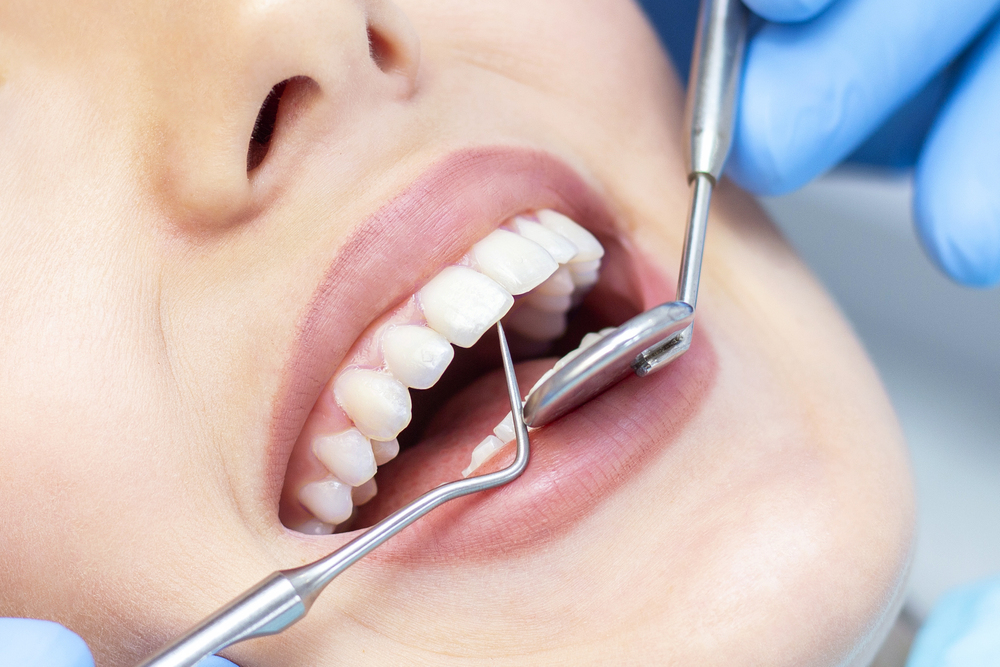
How Dental Tourism is Shaping the Teeth Whitening Industry
In recent years, dental tourism has emerged as a significant trend within the global healthcare industry, offering a unique combination of cost savings, high-quality care, and the allure of travel. Among the various dental procedures that attract patients from around the world, teeth whitening has become a particularly popular choice. This article explores how dental tourism is shaping the teeth whitening industry, examining the factors driving this trend, the benefits and risks involved, and its implications for the future of both dental care and tourism.
The Rise of Dental Tourism
Dental tourism, a subset of medical tourism, refers to the practice of traveling to another country to receive dental care, often at a fraction of the cost of similar procedures in one’s home country. This trend has gained momentum as healthcare costs continue to rise in many developed nations, leading patients to seek more affordable options abroad. Countries such as Mexico, Thailand, Hungary, and Costa Rica have become popular destinations for dental tourists, offering a wide range of services, including cosmetic procedures like teeth whitening.
The appeal of dental tourism lies not only in the potential cost savings but also in the opportunity to combine necessary dental care with a vacation. For many, the idea of recovering from a dental procedure while lounging on a tropical beach or exploring a historic city is an attractive proposition. This unique combination of healthcare and leisure has fueled the growth of dental tourism and, in turn, has significantly impacted the teeth whitening industry.
Why Teeth Whitening?
Teeth whitening is one of the most sought-after cosmetic dental procedures worldwide. It is a relatively simple, non-invasive treatment that can dramatically improve the appearance of a person’s smile. Over time, teeth can become discolored due to various factors, including aging, consumption of staining substances (like coffee, tea, and tobacco), and certain medications. Teeth whitening treatments, which range from in-office procedures using advanced technology to take-home kits, are designed to lighten the color of teeth and remove stains.
The demand for teeth whitening has surged in recent years, driven by societal pressures for a bright, white smile and the growing influence of social media. As more people seek out this treatment, the high cost of professional teeth whitening in countries like the United States, Canada, and the United Kingdom has led many to explore more affordable options abroad.
The Influence of Dental Tourism on Teeth Whitening
Dental tourism has had a profound impact on the teeth whitening industry in several ways:
1. Affordability and Access
One of the most significant factors driving dental tourism is the cost differential between countries. In many Western nations, professional teeth whitening can be prohibitively expensive, with prices ranging from $500 to $1,500 or more, depending on the procedure and location. In contrast, dental tourists can often find comparable treatments abroad for a fraction of the cost. For example, a teeth whitening procedure that might cost $1,000 in the United States could be as low as $200 in Mexico or Thailand. This affordability makes teeth whitening accessible to a broader audience, allowing more people to achieve their desired smile.
2. High-Quality Care
Many dental tourists are pleasantly surprised to find that the quality of care they receive abroad is on par with, or even superior to, that in their home country. In popular dental tourism destinations, clinics often boast state-of-the-art equipment, highly trained professionals, and adherence to international standards. This level of care has helped to dispel the notion that lower costs mean lower quality, encouraging more people to consider dental tourism for their teeth whitening needs.
3. Customized Dental Packages
Dental clinics in tourist-friendly countries have capitalized on the growing demand for dental services by offering customized packages that cater specifically to international patients. These packages often include not only the dental procedure but also accommodation, transportation, and even guided tours. For teeth whitening, patients can choose from various options, such as in-office laser treatments, home whitening kits, or a combination of both. This tailored approach enhances the overall experience, making dental tourism an attractive option for those seeking both cosmetic enhancement and a memorable vacation.
4. Regulation and Safety Concerns
While dental tourism offers numerous benefits, it is not without risks. One of the primary concerns for patients considering teeth whitening abroad is the lack of regulation and oversight in some countries. Standards of care can vary widely, and there may be differences in the materials and techniques used. Additionally, follow-up care can be challenging for dental tourists, as they may need to travel back to the destination country for any necessary adjustments or corrections. It is crucial for patients to thoroughly research the credentials of the clinic and the professionals performing the procedure to ensure they receive safe and effective treatment.
The Future of Teeth Whitening and Dental Tourism
As dental tourism continues to grow, its influence on the teeth whitening industry is likely to increase. The affordability, quality of care, and the unique appeal of combining dental procedures with travel will continue to attract patients from around the world. However, the industry will also need to address the challenges associated with regulation and safety to maintain trust and ensure positive outcomes for patients.
In the future, we may see further innovations in teeth whitening technologies and techniques, driven by the global competition fostered by dental tourism. Clinics in popular destinations will likely continue to invest in advanced equipment and training to attract international patients. At the same time, the rise of digital platforms and telemedicine may make it easier for patients to research and plan their dental tourism experiences, ensuring they receive the best possible care.
Dental tourism is reshaping the teeth whitening industry by making the procedure more accessible and affordable to a global audience. As this trend continues to grow, it will undoubtedly influence the future of cosmetic dentistry, driving innovation and setting new standards for care. For those seeking a brighter smile, dental tourism offers a unique opportunity to enhance their appearance while exploring the world. However, it is essential to approach this option with caution, conducting thorough research and selecting reputable clinics to ensure a safe and successful outcome.
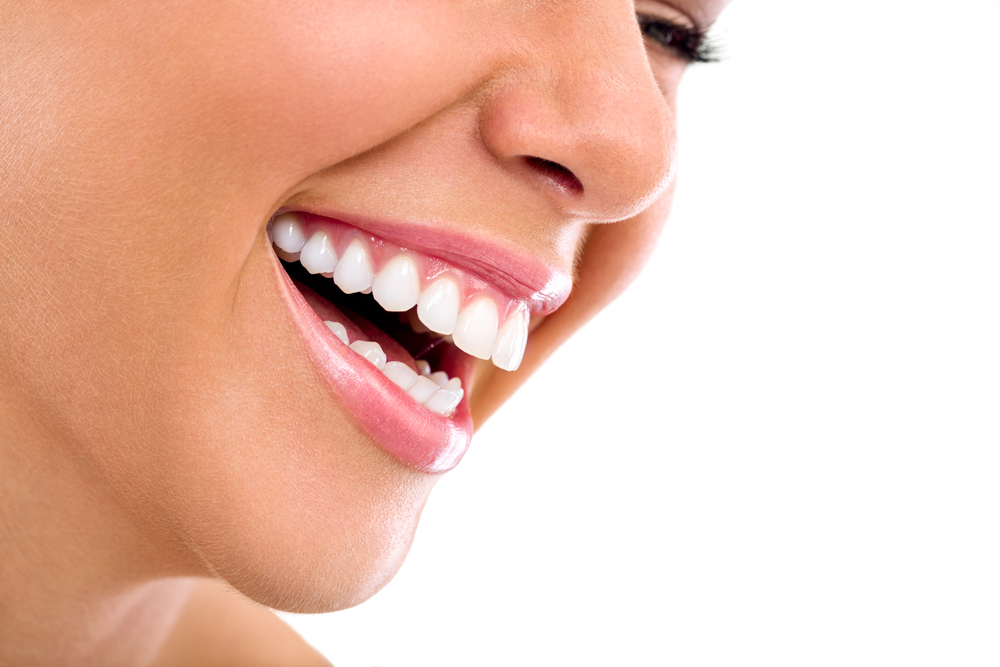
The Power of a Perfect Smile: Social Media’s Influence on Cosmetic Dentistry Trends
In today’s digital age, social media has become a significant force in shaping beauty standards and influencing consumer behavior. Among the many trends that have emerged, one that stands out prominently is the growing demand for smile makeovers. With platforms like Instagram, TikTok, and YouTube filled with images of flawless smiles and perfect teeth, it’s no wonder that people are turning to cosmetic dentistry to achieve similar results. This article explores how social media influence has fueled the popularity of smile makeovers and transformed the cosmetic dentistry industry.
The Rise of the Perfect Smile on Social Media
Social media platforms have become a virtual showroom for aesthetic ideals, where influencers and celebrities showcase their lives—and, importantly, their appearances— to millions of followers. The power of social media influence cannot be underestimated, as it shapes not only what people wear and how they style their hair but also how they perceive their smiles. A bright, straight smile is now often seen as a symbol of health, success, and attractiveness, largely due to its portrayal on these platforms.
The desire for the “perfect smile” has led to a significant increase in the popularity of smile makeovers. A smile makeover typically involves a combination of cosmetic dental procedures, such as teeth whitening, veneers, bonding, and orthodontics, designed to enhance the appearance of one’s smile. These procedures are no longer just for celebrities or the wealthy; they have become accessible to a broader audience, thanks in part to the visibility and desirability created by social media.
The Influence of Social Media on Cosmetic Dentistry
Social media influence has played a crucial role in making cosmetic dentistry more mainstream. Influencers and celebrities often share their smile makeover journeys with their followers, providing detailed accounts of their experiences, the procedures they underwent, and the results. This transparency demystifies the process, making it more approachable for the average person. When followers see their favorite influencers undergo a smile makeover and witness the transformation, they may feel inspired to pursue similar procedures for themselves.
Additionally, the power of social media in promoting the cosmetic dentistry industry cannot be ignored. Dentists and dental practices are increasingly using platforms like Instagram to showcase their work. Before-and-after photos of smile makeovers are particularly popular, as they provide a visual testament to the transformative power of cosmetic dentistry. These images are often accompanied by detailed captions explaining the procedures, costs, and benefits, making the information more accessible and appealing to potential patients.
Moreover, social media allows for real-time interaction between dentists and potential patients. Many dental practices use their social media presence to engage with followers, answer questions, and provide educational content about different cosmetic procedures. This interactive approach helps build trust and rapport with potential clients, making them more likely to choose that practice for their smile makeover.
The Psychological Impact of Smile Makeovers
The desire for a perfect smile is not just about aesthetics; it also has psychological roots. A smile makeover can significantly impact a person’s self-esteem and confidence. Social media influence often amplifies this effect, as individuals compare their appearances to the seemingly flawless images they see online. The pressure to conform to these beauty standards can lead to a desire for cosmetic enhancements, including smile makeovers.
For many, the decision to undergo a smile makeover is driven by the belief that a better smile will lead to improved social and professional opportunities. This belief is not unfounded; studies have shown that people with attractive smiles are often perceived more positively by others. They are seen as more confident, approachable, and successful, which can translate into real-world advantages in both personal and professional settings.
However, it’s essential to approach smile makeovers with realistic expectations. While cosmetic dentistry can undoubtedly enhance one’s smile, it’s crucial to remember that the images seen on social media are often curated and filtered. The pursuit of perfection should not come at the cost of one’s mental health or financial well-being.
The Future of Cosmetic Dentistry in the Age of Social Media
As social media continues to evolve, so too will its influence on cosmetic dentistry trends. The demand for smile makeovers is likely to increase as more people seek to emulate the idealized images they see online. This trend presents both opportunities and challenges for the cosmetic dentistry industry.
On the one hand, the increased demand for smile makeovers is driving innovation in the field. Dentists are continually developing new techniques and technologies to meet the growing expectations of their patients. For example, advancements in digital dentistry, such as 3D imaging and computer-aided design, are making it easier for dentists to plan and execute precise, customized smile makeovers.
On the other hand, the influence of social media also raises ethical concerns. The pressure to achieve a perfect smile can lead to unrealistic expectations and unnecessary procedures. It’s crucial for dental professionals to educate their patients about the realities of cosmetic dentistry and to promote a healthy, balanced approach to aesthetic enhancements.
Social media’s influence on cosmetic dentistry trends, particularly in the realm of smile makeovers, is undeniable. The platforms that connect billions of people worldwide have not only popularized the pursuit of the perfect smile but also made it more accessible. As the trend continues to grow, it’s essential for individuals to approach smile makeovers with a balanced perspective, understanding both the benefits and the limitations of cosmetic dentistry. In the end, a smile makeover should enhance not just one’s appearance, but also their overall well-being and confidence.

Sustainable Practices in the Oral Health Care Industry: Eco-friendly Dentistry on the Rise
The modern dental industry is undergoing a significant transformation. As environmental consciousness grows across various sectors, the oral health care industry is also stepping up to the plate, embracing sustainable practices and eco-friendly technologies. This shift not only aims to reduce the environmental footprint of dental practices but also seeks to enhance patient care and community health. This article delves into the various sustainable practices being adopted in the oral health care industry, focusing on their impact and benefits.
The Drive for Sustainability in Dentistry
Sustainability in dentistry encompasses a broad range of practices aimed at minimizing environmental impact while maintaining or improving the quality of care. These practices range from reducing waste and conserving water to using eco-friendly materials and energy-efficient equipment. The motivation behind this shift is multifaceted, driven by both ethical considerations and the potential for cost savings.
Eco-friendly Materials and Products
One of the primary areas where dental practices are making strides in sustainability is in the use of eco-friendly materials. Traditional dental materials often contain harmful chemicals that can contribute to pollution and health risks. For instance, amalgam fillings, which contain mercury, pose significant environmental hazards if not disposed of correctly.
To combat this, many dental practices are transitioning to composite resins and glass ionomer cements, which are less harmful to the environment. Additionally, biodegradable and recyclable products are being increasingly used for items such as dental floss, toothbrushes, and patient bibs. Bamboo toothbrushes and silk dental floss are popular alternatives that reduce plastic waste and are biodegradable.
Reducing Waste
Waste reduction is another critical component of sustainable dentistry. Dental practices generate a considerable amount of waste, from single-use items to packaging materials. Implementing recycling programs and choosing products with minimal or recyclable packaging can significantly reduce this waste.
Many practices are now using digital records and digital x-rays, which not only reduce paper waste but also minimize the use of hazardous chemicals required for traditional x-ray processing. Furthermore, digital impressions are replacing traditional molds, reducing the need for disposable impression materials and shipping-related emissions.
Water and Energy Conservation
Dental offices can also become more sustainable by conserving water and energy. Traditional dental practices consume large quantities of water for procedures and sterilization. Implementing water-saving devices and techniques can significantly reduce this consumption. For instance, using dry vacuum systems instead of wet vacuum systems can save thousands of gallons of water annually.
Energy conservation is another area where dental practices can make a difference. Upgrading to energy-efficient lighting, such as LED bulbs, and investing in energy-efficient dental equipment can reduce energy consumption. Additionally, practices can implement energy management systems to monitor and optimize energy use.
Sustainable Periodontitis Diagnosis and Treatment
Sustainability in the dental industry extends to specific areas of diagnosis and treatment, such as periodontitis, a common and serious gum infection that damages the soft tissue and destroys the bone that supports your teeth. Traditional periodontitis diagnosis and treatment methods often involve extensive use of paper records, chemical-laden products, and energy-intensive procedures.
Eco-friendly practices in periodontitis care include using digital periodontal charting to reduce paper use and adopting minimally invasive treatments that require fewer resources and produce less waste. For example, laser therapy for periodontitis is a more sustainable option compared to traditional surgical methods. It reduces the need for disposable surgical tools and minimizes patient recovery time, thereby decreasing the overall environmental impact of treatment.
Addressing Oral Cavity Cancer with Sustainable Practices
Oral cavity cancer, which affects the mouth, lips, and tongue, is another area where sustainable practices are being implemented. Early diagnosis and treatment of oral cavity cancer are crucial, and advancements in technology are aiding in more sustainable approaches.
Digital imaging and electronic health records play a significant role in reducing the environmental impact of oral cavity cancer diagnosis and treatment. These technologies not only enhance diagnostic accuracy but also eliminate the need for physical storage space and reduce the consumption of paper and other materials. Additionally, non-invasive diagnostic tools, such as optical imaging, reduce the need for disposable biopsy instruments and other single-use items.
The Role of Education and Community Outreach
Sustainable dentistry is not just about what happens inside the dental office; it also involves educating patients and the community about the importance of oral health and environmental responsibility. Dental professionals are increasingly engaging in community outreach programs to promote eco-friendly oral health care practices. These initiatives include educating patients about the benefits of using sustainable dental products, proper disposal of dental waste, and the importance of regular dental check-ups for early detection of issues like periodontitis and oral cavity cancer.
The rise of eco-friendly dentistry is a positive development in the oral health care industry. By adopting sustainable practices, dental professionals can reduce their environmental impact, improve patient care, and contribute to the overall health of their communities. From using eco-friendly materials and reducing waste to conserving water and energy and implementing sustainable periodontitis and oral cavity cancer treatments, the dental industry is paving the way for a greener future. As more practices embrace these changes, the benefits will extend beyond the environment, fostering a healthier, more sustainable world for all.

Celebrities & Dental Photography: Oral Voyeurism
Step into the captivating world of celebrity dentistry, where oral voyeurism meets the glitz and glamour of Hollywood. From Kanye West’s titanium teeth to intricate dental photography capturing every detail, join us on a journey through the intriguing realm of celebrities’ smiles and narcissistic tendencies. Explore how prosthodontics and diamond grills have become symbols of status in this fascinating industry where dentists showcase their galleries of famous patients with pride. Let’s delve deep into the world of celebrity teeth, gums, and beyond!
The Global Demand for Celebrity News is Insatiable
In a world obsessed with the lives of the rich and famous, celebrity news reigns supreme. The insatiable demand for glimpses into their glamorous lifestyles knows no bounds, fueling a multi-billion dollar industry that thrives on intrigue and scandal.
From red carpet events to everyday paparazzi shots, the public craves every detail of celebrities’ lives, including their personal relationships, fashion choices, and even dental transformations. There is an undeniable allure in peeking behind the curtains of fame to witness the human side of these larger-than-life figures.
As social media platforms provide instant access to stars’ daily activities, fans eagerly devour updates on everything from their latest projects to their most recent dental procedures. This relentless appetite for celebrity news has turned ordinary people into virtual voyeurs, living vicariously through the glamorous images plastered across screens worldwide.
Oral Voyeurism Venturing Into Celebrities’ Mouths
Step into the world of celebrity obsession, where every detail of their lives becomes fodder for public consumption. From their relationships to their fashion choices, nothing is off-limits. But what about venturing beyond the surface and diving into the depths of celebrities’ mouths? Yes, you read that right – oral voyeurism has taken on a whole new meaning in our age of constant surveillance.
In a society fixated on perfection and image, it’s no wonder that even celebrities’ teeth and gums are under scrutiny. The rise of dental photography has allowed us to get up close and personal with those pearly whites, diamond grills, and even titanium teeth sported by some A-listers.
But why stop at just admiring their smiles? For some celebrity dentists, working on these famous mouths is like hitting the jackpot. Imagine being the one responsible for crafting Kanye West’s titanium teeth or ensuring that Beyoncé’s smile dazzles on stage. Smart social-media-savvy dentists will showcase a gallery of celebrity dental patients on their websites – other celebrities are then instantly motivated to join the flock – ritzy sheep follow as the alpha ram dentist leads.
So next time you catch yourself scrolling through dentists galleries of patients who happen to be celebs, remember that oral voyeurism knows no bounds in our fascination with all things glamorous – even if it means peeking inside a star-studded mouth.
Beyond The Lips, Celebrities’ Narcissism Deepens Into The Throat
As we delve deeper into the world of celebrity culture, it’s fascinating to observe how their narcissism extends beyond just their physical appearance and fame. Beyond the perfectly sculpted lips and dazzling smiles lies a realm unexplored by many – the throat.
Celebrities, known for their self-absorption and desire for attention, now showcase not only their pearly whites but also venture into showcasing the health and beauty of their throats. From vocal cord surgeries to unique throat tattoos, nothing seems off-limits in this era of extreme self-expression.
With social media platforms offering an intimate glimpse into celebrities’ lives, fans are given unprecedented access to even the most personal aspects of their favorite stars. Partnering with social media influencers and managers as this obsession with perfection has trickled down from teeth whitening treatments to throat rejuvenation procedures, reflecting a society fixated on outward appearances.
In this age of increasing digital voyeurism, it’s no surprise that celebrities are willing to expose every inch of themselves – including what lies beyond those famous lips.
Kanye West’s Titanium Teeth : Celebrity Dentists Love Them
Kanye West, the legendary rapper and fashion icon, is known for pushing boundaries in every aspect of his life – including his dental aesthetics. With a penchant for opulence and extravagance, Kanye proudly sports titanium teeth that shine like no other. These unique dental fixtures have captured the attention of not just fans, but also celebrity dentists worldwide.
Celebrity dentists are drawn to Kanye’s bold choice because it showcases their skills and creativity on a global stage. Crafting titanium teeth requires precision and artistry, making it a challenging yet rewarding task for these elite dental professionals. By working on high-profile clients like Kanye West, celebrity dentists cement their status as experts in prosthodontics and cosmetic dentistry.
The allure of creating bespoke diamond grills or titanium teeth for celebrities goes beyond just the technical aspect – it’s about being part of pop culture history. As trends come and go, Kanye West’s titanium teeth serve as a lasting symbol of innovation in dental aesthetics. Celebrity dentists are eager to leave their mark by transforming smiles into works of art fit for the stars.
Dental Photography is the Vehicle Driving This Phenomenon
Dental photography has become the ultimate backstage pass into the world of celebrity smiles. It captures every detail of their teeth and gums with precision and clarity, allowing fans to get up close and personal with their favorite stars’ oral aesthetics.
From diamond grills to titanium teeth, these snapshots showcase the extravagant dental work that sets celebrities apart from the rest. Celebrity dentists are in high demand for creating these unique and eye-catching looks that push boundaries in prosthodontics.
The fascination with celebrities’ teeth goes beyond mere curiosity; it delves into a realm of oral voyeurism where viewers can’t help but be drawn into the intricate details of each smile. This phenomenon highlights society’s obsession with perfection and beauty, as well as the influence of celebrity culture on our own self-image.
Through dental photography, we not only witness the artistry behind these transformations but also gain insight into the deep-rooted narcissism prevalent in Hollywood. It’s a visual journey that reveals more than just pearly whites – it uncovers a complex interplay between vanity, fame, and identity within each captivating image captured by skilled photographers in dentists’ galleries of patients.
Voyeurism & Narcissism in a Long Tongue Kiss
In a world where celebrity culture reigns supreme, the fascination with their every move, including their dental choices and oral hygiene practices, knows no bounds. The intersection of voyeurism and narcissism in the realm of celebrity dentistry is evident in the way fans eagerly consume images of their favorite stars’ teeth and gums.
From Kanye West’s titanium teeth to diamond grills that sparkle on red carpets, celebrities are not only showcasing their wealth but also feeding into a cycle of admiration and envy. Celebrity dentists play a crucial role in creating these iconic smiles that set trends in prosthodontics.
Dental photography has become the vehicle driving this phenomenon, allowing us to peek into the mouths of celebrities like never before. As we marvel at perfectly aligned teeth and flawless smiles, we are reminded of our own imperfections while simultaneously aspiring to achieve similar levels of perfection.
The long tongue kiss shared between voyeurism and narcissism reveals a complex relationship between celebrities and their fans. While we may be drawn to the allure of fame and beauty, it is essential to remember that behind every dazzling smile lies an individual who is just as human as the rest of us.
So next time you catch yourself scrolling through galleries of patients from celebrity dentists or admiring your favorite star’s latest dental transformation, take a moment to reflect on what drives this obsession with perfect smiles. Perhaps there is more to learn about ourselves within those glossy pages than meets the eye.

Smile Makeovers: Digital Smile Design is so 2024
In the realm of aesthetic dentistry, the concept of smile makeovers has undergone a significant transformation. Gone are the days when a simple whitening or veneer procedure sufficed. Welcome to 2024, where Digital Smile Design (DSD) is redefining the way we perceive and perfect smiles. This innovative approach combines cutting-edge technology with artistic precision to create personalized, harmonious, and functional smiles.
The Evolution of Smile Makeovers
A smile makeover is a comprehensive approach to improving the appearance of your smile through one or more cosmetic dentistry procedures. These can include dental veneers, composite bonding, tooth implants, and teeth whitening. The aim is not only to enhance aesthetics but also to improve the overall function and health of your teeth.
The traditional methods of smile makeovers were largely based on a dentist’s subjective assessment and the patient’s preferences. However, these methods often lacked a standardized approach, leading to varying results. Enter Digital Smile Design, a groundbreaking technique that leverages digital technology to plan and execute smile makeovers with unparalleled accuracy.
What is Digital Smile Design?
Digital Smile Design is a multi-faceted approach that involves the use of digital tools to analyze a patient’s dental and facial structures. This analysis is then used to create a customized treatment plan that addresses both aesthetic and functional needs. The process begins with a thorough examination and the collection of digital images, videos, and impressions of the patient’s teeth and face.
These digital assets are then used to create a virtual model of the patient’s mouth. Advanced software allows the dentist to manipulate this model, experimenting with different shapes, sizes, and arrangements of teeth to find the perfect balance. The result is a precise, predictable outcome that can be visualized and approved by the patient before any physical work begins.
The Power of Visualization
One of the most significant advantages of Digital Smile Design is the ability to visualize the end result. Patients can see a digital mock-up of their new smile, allowing them to provide input and make informed decisions about their treatment. This visualization ensures that the patient’s expectations are aligned with the final outcome, reducing the risk of dissatisfaction.
A smile makeover can make you great again and with Digital Smile Design, this statement holds more truth than ever. By allowing patients to actively participate in the design process, DSD not only enhances the aesthetic appeal of their smile but also boosts their confidence and overall well-being.
Comprehensive Approach to Aesthetics and Function
Digital Smile Design goes beyond mere aesthetics. It considers the functional aspects of dental health, ensuring that the new smile is not only beautiful but also sustainable and healthy. One crucial element of this comprehensive approach is lip support.
Lip Support in Digital Smile Design
Lip support is part of Digital Smile Design, and it plays a vital role in achieving a natural and youthful appearance. The position and fullness of the lips can significantly impact the overall aesthetics of a smile. Inadequate lip support can result in a sunken or aged appearance, while optimal support can enhance facial harmony and attractiveness.
Through DSD, dentists can assess the patient’s lip position and structure, making adjustments to the teeth and gums that improve lip support. This consideration ensures that the smile makeover complements the patient’s facial features, creating a cohesive and balanced look.
The Technological Edge
The technological advancements in Digital Smile Design extend to the use of 3D printing and CAD/CAM (Computer-Aided Design/Computer-Aided Manufacturing) systems. These technologies enable the creation of precise dental restorations, such as crowns, bridges, and veneers, that fit perfectly and function optimally.
Moreover, the integration of Artificial Intelligence (AI) and machine learning in DSD software allows for even greater precision and customization. AI algorithms can analyze vast amounts of data, predicting the best outcomes based on similar cases and patient-specific factors. This level of personalization ensures that each smile makeover is truly unique and tailored to the individual.
The Future of Smile Makeovers
As we look ahead, it is clear that Digital Smile Design is setting the standard for smile makeovers in 2024 and beyond. The combination of digital technology, artistic expertise, and patient involvement creates a powerful synergy that produces exceptional results.
Patients can now achieve their dream smiles with confidence, knowing that their treatment plan is backed by science and precision. The holistic approach of DSD, which includes considerations like lip support, ensures that the final outcome is not only aesthetically pleasing but also functional and long-lasting.
A smile makeover can make you great again, and with Digital Smile Design, this transformation is more achievable than ever. Embrace the future of aesthetic dentistry and experience the unparalleled benefits of a smile designed just for you.

Why Dental Veneers Are The Hollywood Smile
Have you ever wondered how celebrities like George Clooney or Julia Roberts have that perfect, dazzling smile that lights up the silver screen? The secret behind their flawless teeth is none other than dental veneers – the key to achieving the coveted Hollywood Smile. Let’s dive into the world of digital smile design and explore why dental veneers are a game-changer in the world of cosmetic dentistry!
What is The Hollywood Smile? Who Coined The Phrase?
The Hollywood Smile is more than just a perfect set of teeth – it’s an iconic symbol of confidence and glamour that lights up red carpets worldwide. This dazzling smile has become synonymous with the glitz and glamor of Hollywood, setting the standard for beauty in the entertainment industry.
The phrase “Hollywood Smile” was first coined to describe the radiant smiles seen on movie stars gracing the silver screen during Hollywood’s golden era. It represents a flawless set of pearly whites that exude charisma and charm, captivating audiences around the globe.
Over time, advancements in cosmetic dentistry have made it possible for anyone to achieve their own version of the coveted Hollywood Smile. Dental veneers play a significant role in transforming ordinary smiles into star-worthy ones, making dreams of having a picture-perfect smile within reach for everyone.
Who in Hollywood Has Dental Veneers?
Have you ever wondered how celebrities in Hollywood always seem to have perfect smiles? Well, the secret lies in dental veneers. These thin shells made of porcelain are custom-made and bonded to the front surface of teeth to enhance their appearance.
Many A-listers such as Tom Cruise, Zac Efron, and Miley Cyrus have opted for dental veneers to achieve that flawless “Hollywood smile.” It’s no surprise that Hollywood has become synonymous with dazzling white teeth and impeccable smiles. There’s a massive buzz in Hollywood about both veneers and fixed prosthodontics thanks to the legendary work of Dr Thomas Connelly with Kanye West and his shock-value titanium teeth, putting cosmetic dentistry on the global media map like never before.
With advancements in cosmetic dentistry, more and more people are considering dental veneers not just for aesthetics but also for improving oral health. Whether it’s fixing chipped teeth or closing gaps between teeth, veneers offer a quick solution for achieving that picture-perfect smile.
So next time you see your favorite celebrity flashing their pearly whites on the red carpet, remember that behind those gleaming smiles may be a set of carefully crafted dental veneers.
Is George Clooney a Fan of Dental Veneers?
Have you ever wondered if Hollywood heartthrob George Clooney has had any work done on his teeth to achieve that perfect smile? Well, it seems like the actor may be a fan of dental veneers.
If you take a closer look at some of his older photos compared to recent ones, you might notice a subtle difference in his smile – it appears more flawless and uniform now. This could be attributed to the magic of dental veneers.
While George Clooney has never publicly confirmed whether he has porcelain veneers or not, many speculate that he likely did undergo this cosmetic procedure to enhance his already charming smile.
Whether or not George Clooney is indeed a fan of dental veneers remains a mystery, but one thing is for sure – his smile continues to dazzle fans worldwide.
Why Are They Also Called Porcelain Veneers?
Have you ever wondered why dental veneers are also referred to as porcelain veneers? Well, let’s dive into the reason behind this common term in the world of cosmetic dentistry.
Dental veneers get their name from the material they are made of – porcelain. This material is known for its durability, stain resistance, and ability to mimic natural teeth.
The translucent quality of porcelain closely resembles tooth enamel, making it an ideal choice for creating a natural-looking smile.
Porcelain veneers are custom-made shells that cover the front surface of your teeth to improve their appearance. They can correct various imperfections such as discoloration, gaps, chips, and misalignments.
While they may be associated with Hollywood, one of the great aspects of dental veneers is that they’re affordable for a large swathe of everyday people, simply a full orthodontic fix costs a lot more and so many people opt for the simplicity of veneers’ glamorous-yet-affordable look.
Due to their lifelike appearance and long-lasting results, many basic-income people opt for porcelain veneers to achieve a flawless smile that boosts their confidence and overall aesthetic appeal.
When Hollywood Burns, What Will Happen To All Those Veneers?
As fires rage through Tinseltown, one can’t help but wonder about the fate of those meticulously crafted dental veneers. Will they melt under the scorching heat, leaving behind only ashes and memories of once-perfect smiles? Will the dazzling smiles of the stars fade away with the flames, or will they endure like a resilient symbol of glamour and perfection?
Perhaps amidst the chaos and destruction, these porcelain veneers will stand strong as a testament to Hollywood’s obsession with beauty and perfection. A reminder that even in times of turmoil, some things remain untouched by disaster.
So next time you watch a movie or scroll through Instagram admiring those flawless smiles, remember that behind every perfect grin lies a story – maybe even one about surviving Hollywood’s fiery trials.
Who Are The Best Dental Veneer Dentists?
When looking to achieve the perfect Hollywood smile with dental veneers, it is crucial to choose a skilled and experienced dentist. The best dental veneer dentists are those who specialize in cosmetic dentistry and have a proven track record of successful veneer placements.
By working with top-notch professionals in the field of fixed prosthodontics, such as renowned celebrity dentists, you can rest assured that you will receive high-quality care and achieve stunning results. Remember, your smile is an investment in yourself, so don’t settle for anything less than the best when it comes to enhancing your pearly whites with dental veneers.

Elon Musk’s Dentists: Who Closed His Tooth Gap?
Elon Musk: the name alone evokes images of technological innovation, space exploration, and… a distinctive tooth gap? Yes, you read that right! The Tesla and SpaceX magnate has captivated the world not only with his groundbreaking ventures but also with a unique feature that recently disappeared. Join us as we delve into the mysterious case of Elon Musk’s vanishing tooth gap and explore the fascinating world of celebrity dentists.
Elon’s Iconic Tooth Gap
Elon Musk’s tooth gap became a trademark of his unconventional charm, setting him apart in the world of tech titans. The space between his two front teeth sparked curiosity and even admiration among fans, becoming a quirky symbol of his individuality. Some saw it as endearing; others wondered why such a successful figure hadn’t opted for dental correction.
Regardless of opinions, Elon embraced his unique smile with confidence, rarely shying away from public appearances or interviews that showcased his distinctive feature. It was almost like a personal brand within the brand – an unexpected touch that made him more relatable and human amidst his futuristic endeavours. But then came the day when this iconic gap mysteriously vanished…
Dentist Rumours: Who closed Elon’s Gap?
Elon Musk’s distinctive tooth gap has been a topic of fascination for many. However, recent rumors suggest that the tech billionaire may have decided to bid farewell to his iconic dental feature. Speculations are rife about which dentist could be responsible for closing Elon’s tooth gap. Could it be a well-known celebrity dentist or perhaps someone from his hometown in South Africa?
The mystery surrounding who closed Elon Musk’s tooth gap only adds to the intrigue and curiosity of fans and followers alike. While some believe it could be a cosmetic decision, others speculate if there was a practical reason behind this dental change.
Regardless of the reasons behind closing his tooth gap, one thing is clear – Elon Musk continues to surprise and captivate with every move he makes, even when it comes to something as seemingly mundane as dental work.
Great work by the SpaceX Falcon team launching 14 times in a single month! https://t.co/hPfb96qOgs
— Elon Musk (@elonmusk) June 1, 2024
Celebrity Dentists: Who Are The Top Ones?
When it comes to celebrity dentists, the top ones are known for their exceptional skills and ability to create stunning smiles for famous faces. These dentists have worked with some of the biggest names in Hollywood and beyond, ensuring that their clients’ teeth are always camera-ready. The same now applies to celebrity orthodontics who thanks to reality TV become celebrities in their own right.
One such top celebrity dentist is Dr. Kevin Sands, based in Beverly Hills, who has a long list of A-list clients including Kim Kardashian and Justin Bieber. His expertise in cosmetic dentistry has made him a go-to choice for celebrities looking to enhance their smiles.
Another renowned name in the world of celebrity dentistry is Dr. Michael Apa, whose innovative approach to smile makeovers has earned him a stellar reputation among stars like Jennifer Lopez and Huda Kattan. With a focus on natural-looking results, Dr. Apa’s work speaks for itself.
These top celebrity dentists combine artistry with precision to transform smiles and boost confidence for those constantly in the public eye.
Famous People who have had Dental Work done
Celebrities are no strangers to enhancing their smiles through dental work. From teeth whitening to orthodontic treatments, many famous faces have undergone procedures to perfect their pearly whites.
Actors, singers, and even politicians have been known to seek out the expertise of top-notch dentists to achieve a picture-perfect smile. Whether it’s fixing crooked teeth or closing gaps like Elon Musk’s iconic tooth gap, these stars understand the importance of a winning smile in the spotlight.
While some may opt for subtle changes, others go all out with cosmetic dentistry transformations that completely revamp their look. The power of a confident smile can make a world of difference in how someone is perceived by the public and media alike.
In an industry where image is everything, it’s no surprise that many celebrities are willing to invest in their dental health and appearance. Who knows which famous face will be next in line for a dazzling smile makeover?
Kanye West’s Titanium Teeth: Huge News
Did you hear the buzz about Kanye West’s latest dental transformation? The rapper and fashion mogul now known mostly as Ye recently made headlines with his new titanium teeth, sparking conversations across social media platforms and huge coverage n global mainstream media. Known for pushing boundaries in music and style, Kanye’s decision to opt for such a bold dental choice doesn’t come as a surprise to his fans.
With titanium being a strong and durable metal, Kanye’s new teeth are not only eye-catching but also practical. This innovative move showcases his willingness to explore unconventional avenues even when it comes to something as personal as his own smile. As a trendsetter in the entertainment industry, Kanye West continues to inspire others to think outside the box and embrace their individuality through unique expressions of self.
The celebrity dentist responsible for Kanye West’s titanium teeth is Dr Thomas Connelly and since this massive news item blew out in early 2024, media has also moved onto Ye’s daughter North West and her Diamond Grillz, and also the provocatively fashionable attire (or lack thereof) worn publicly by Ye’s partner Bianca Censori, who certainly has a mighty fine rack of teeth herself.
In a world where conformity often reigns supreme, Kanye’s titanium teeth serve as a reminder that creativity knows no bounds. Whether you love it or hate it, one thing is certain – Kanye West remains unapologetically himself in all aspects of life, including his choice of dental enhancements.
Cosmetic Dentistry’s Effect on Public Figures
Cosmetic dentistry has undoubtedly had a significant impact on the smiles of many public figures. From Hollywood celebrities to famous athletes, the allure of a perfect smile is undeniable.
In an image-driven society where appearances matter, having flawless teeth can make a world of difference in how someone is perceived by the public. Public figures often feel pressure to maintain a polished and camera-ready appearance at all times.
The accessibility of cosmetic dental procedures has made it easier for individuals in the spotlight to enhance their smiles. Teeth whitening, veneers, and orthodontic treatments have become go-to options for those looking to improve their dental aesthetics.
By investing in cosmetic dentistry, public figures can boost their confidence and present themselves in a more appealing light to their fans and followers. A radiant smile can leave a lasting impression and elevate one’s overall presence in the media spotlight.
Will Tesla Get Involved in Dental Technology?
As we’ve explored the world of celebrity dentists and famous figures who have undergone dental transformations, one can’t help but wonder about the future. With innovative technologies constantly emerging, could Tesla, under Elon Musk’s leadership, potentially get involved in dental technology?
While it may seem like a far-fetched idea at first glance, considering Musk’s track record of pushing boundaries in various industries, nothing seems entirely off the table. Could we see revolutionary advancements in dental technology coming from the mind behind SpaceX and Tesla? Most business pundits would say that Tesla may start manufacturing the future technology and as usual they will push the boundaries of what’s possible.
In a world where even our smiles are subject to innovation and enhancement, perhaps Elon Musk’s journey with his iconic tooth gap might just inspire a whole new era of possibilities in the field of dentistry. Stay tuned for what the future holds – it might be brighter (and whiter) than we ever imagined!

Robotic Dentists: Could Future Dentistry Endanger Humankind?
In the ever-evolving landscape of technology, it seems no aspect of our lives is immune to automation. From manufacturing to transportation, artificial intelligence and robotics are reshaping industries at an unprecedented pace. Dentistry, a field deeply rooted in tradition and human expertise, is not exempt from this wave of innovation. Enter the era of robotic dentists – a concept both fascinating and daunting, raising questions about the future of oral care and the potential risks it might entail for humankind.
The notion of robotic dentists might conjure images straight out of science fiction: gleaming machines with precision tools, capable of performing intricate dental procedures with flawless accuracy. Indeed, advances in robotics have enabled the development of highly sophisticated dental technology, promising enhanced efficiency and precision in treatment. Proponents argue that robotic dentists could revolutionize oral healthcare, offering faster procedures, reduced human error, and improved patient outcomes. Even dentists say robots won’t threaten their livelihoods emphasizing the irreplaceable human touch and expertise essential to the practice of dentistry.
However, amidst the excitement surrounding this technological leap, concerns loom large. Could the rise of robotic dentists pose a threat to human dentists and, by extension, the livelihoods of those in the dental profession? Surprisingly, even dentists themselves offer reassurance on this front. Many argue that while robotic assistance may streamline certain aspects of dental practice, the artistry and intuition inherent to human dentistry cannot be replicated by machines alone. Dentistry, they contend, is as much an art as it is a science – a delicate balance of technical skill and empathetic care that robots simply cannot emulate.
Moreover, the implementation of robotic dentists raises ethical considerations regarding patient safety and autonomy. Will patients feel comfortable entrusting their oral health to machines, devoid of human empathy and understanding? While robots may excel in precision, they lack the ability to connect with patients on a personal level, potentially leading to a sense of detachment and distrust. Additionally, concerns about data security and privacy emerge in the context of robotic dentistry, as sensitive patient information becomes increasingly digitized and vulnerable to cyber threats.
Beyond these immediate concerns lies a broader question: what impact will the advent of robotic dentists have on society as a whole? As technology continues to advance at a rapid pace, the boundaries between man and machine blur ever further. While proponents herald the potential benefits of robotic dentistry – from improved accessibility to reduced treatment costs – skeptics warn of unintended consequences. Could the widespread adoption of robotic dentists exacerbate existing healthcare disparities, widening the gap between those who can afford cutting-edge technology and those who cannot?
Seen from above an below, the future of dentistry is longer than its past which is truly exciting. With advancements in fields such as nanotechnology and regenerative medicine, the landscape of oral healthcare is poised for profound transformation. From personalized treatments tailored to individual genetic profiles to the regeneration of damaged tissues, the possibilities are both awe-inspiring and daunting. In this rapidly evolving landscape, the role of robotic dentists remains uncertain – a promising tool in the dentist’s arsenal, yet one whose full potential and pitfalls have yet to be realized.
Ultimately, the rise of robotic dentists represents a double-edged sword – a testament to human ingenuity and innovation, yet fraught with ethical and existential dilemmas. As we navigate the uncharted waters of technological progress, it is imperative that we proceed with caution, mindful of the potential risks and consequences that lie ahead. While the allure of robotic dentistry may be tantalizing, we must not lose sight of the humanity at the heart of oral healthcare – a delicate balance that must be preserved as we chart a course into an uncertain future.
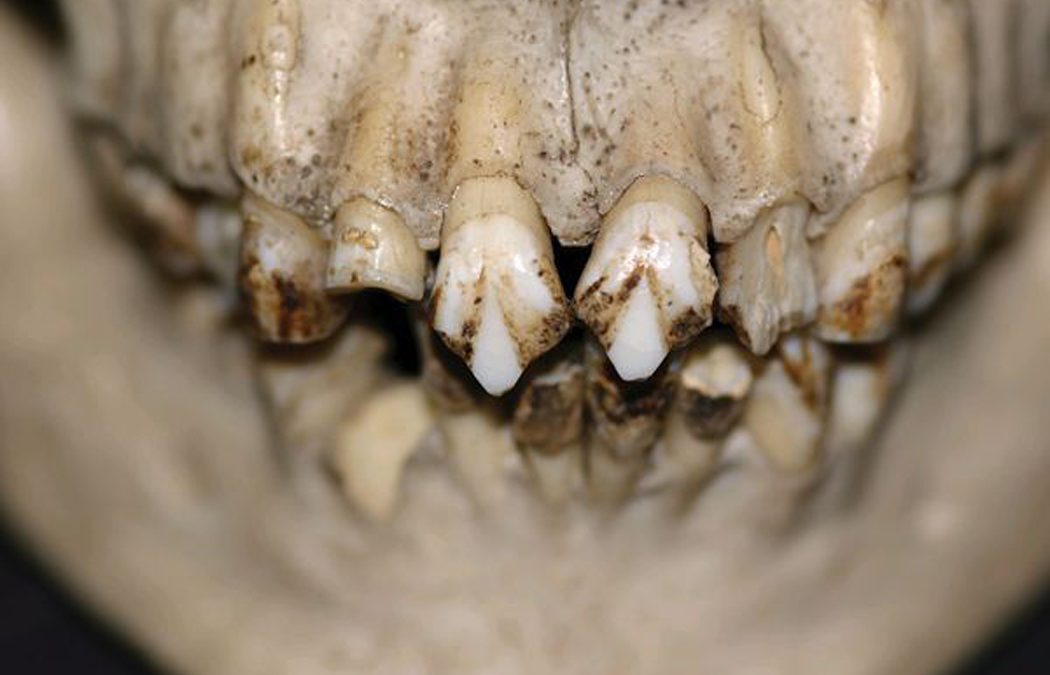
The Dentist Will See You Now, Said Someone 130,000 Years Ago
In the ever-evolving narrative of human history, the pursuit of health and wellness has been a constant thread. Recent archaeological discoveries have shed light on the fact that even our ancient ancestors, living 130,000 years ago, were not exempt from dental concerns. The unearthing of a fossilized tooth with signs of intentional dental manipulation prompts us to reconsider the sophistication of ancient societies and their understanding of oral health. This discovery not only unveils the ancient roots of dentistry but also underscores the communal support systems that allowed for the establishment of what we now recognize as dental clinics.
Ancient Dentistry: A Glimpse into the Past
The fascinating find of a 130,000-year-old incisor with clear signs of deliberate modification in what is now Israel challenges our perceptions of prehistoric societies. The tooth, discovered in the Qesem Cave, displayed precise grooves and intentional shaping, suggesting a form of dental intervention. This remarkable find has sparked a reevaluation of our understanding of ancient cultures and their awareness of dental health.
The dental modification observed in this ancient tooth raises intriguing questions about the purpose behind such interventions. Was it a response to dental issues like cavities or misalignment? Or did it serve a cultural or ritualistic function? While the exact motivations remain elusive, the discovery emphasizes the presence of a rudimentary form of dentistry in ancient times.
Dental Clinic Longevity
Fast-forward to the present day, and dental clinics have become ubiquitous pillars of healthcare infrastructure. That dental clinic longevity reflects community support is a given locally and worldwide, and a testament to the value societies place on oral health. The evolution of dentistry from ancient tooth modifications to modern-day clinics is marked by a collective commitment to well-being.
The endurance of dental clinics can be attributed to the unwavering support of communities. From routine check-ups to complex procedures, dental clinics cater to the diverse needs of individuals, promoting preventive care and addressing oral health issues promptly. Community support, both in terms of patronage and advocacy for oral health awareness, has been instrumental in the sustained success of dental practices.
As dental clinics continue to serve as vital hubs for oral healthcare, their significance extends beyond the treatment room. These establishments contribute to the overall well-being of communities by fostering a culture of proactive health management. Regular dental visits not only prevent oral diseases but also contribute to the early detection of systemic health issues, reinforcing the interconnectedness of oral and overall health.
The History of Orthodontics is Unfolding Now
While the recent archaeological discovery sheds light on ancient dental practices, the history of orthodontics is also undergoing a transformative expansion. Orthodontics, the branch of dentistry focused on the correction of misaligned teeth and jaws, has evolved significantly over the centuries.
The earliest evidence of orthodontic practices dates back to ancient civilizations, where crude devices were employed to address dental misalignments. However, it was in the 19th and 20th centuries that orthodontics underwent a revolutionary transformation. The introduction of braces, orthodontic appliances, and innovative techniques marked a new era in the quest for straighter teeth and improved dental function.
In the contemporary landscape, orthodontics has embraced cutting-edge technology, offering patients a range of advanced treatments such as clear aligners and computer-aided design. This evolution reflects not only the advancements in dental science but also the increasing demand for aesthetic orthodontic solutions.
The history of orthodontics is also expanding as a testament to the dynamic nature of dental care, driven by a desire for improved oral function, comfort, and aesthetics. As orthodontic practices continue to advance, the focus on personalized treatment plans and patient-centric approaches is redefining the patient experience, making orthodontic care more accessible and tailored to individual needs.
The discovery of a modified tooth from 130,000 years ago serves as a captivating glimpse into the ancient origins of dentistry. As we marvel at the ingenuity of our ancestors, we must also recognize the enduring importance of dental clinics in our contemporary world. The longevity of dental clinics is a reflection of the collective commitment to oral health within communities.
Furthermore, the history of orthodontics highlights the dynamic evolution of dental care, from ancient attempts to address misalignments to the sophisticated treatments available today. The expanding history of orthodontics underscores the continual quest for improved oral function, comfort, and aesthetics.
In essence, the dentist’s call has resonated through the ages, from ancient dental modifications to modern-day clinics. As we continue to prioritize oral health, we honor not only our past but also the communities that support the longevity of dental care.

Dental Tourism to Geelong? British Pounds Can Take You a Long Way
Dental tourism is a growing trend, with people seeking affordable and high-quality dental care in destinations around the world. Geelong, a picturesque city in Australia, is becoming increasingly popular among dental tourists, and British visitors are finding that their pounds can go a long way when it comes to oral health. In this article, we’ll explore why Geelong is becoming a hotspot for dental tourism and how British pounds can contribute to a cost-effective and satisfying dental experience.
Geelong: A Hidden Gem for Dental Tourism
Geelong, located in the state of Victoria, Australia, is renowned for its stunning landscapes, vibrant culture, and friendly locals. However, it’s not just the scenic beauty that is attracting visitors; Geelong has also earned a reputation for providing world-class dental services at competitive prices. The city boasts a range of modern dental clinics equipped with state-of-the-art facilities and staffed by highly qualified professionals.
One of the key advantages of choosing Geelong for dental tourism is the favorable exchange rate for British visitors. The strength of the British pound against the Australian dollar means that dental treatments in Geelong can be more affordable compared to similar services in the UK. This has prompted an increasing number of British tourists to consider Geelong as their destination for dental procedures, ranging from routine check-ups to advanced cosmetic dentistry.
Affordability Without Compromising Quality
Australian orthodontists and dentists adhere to stringent quality standards, ensuring that patients receive top-notch care. The affordability of dental treatments in Geelong, coupled with the high standards of professionalism, makes it an attractive option for those looking to save on dental expenses without compromising on quality.
British Pounds Stretch Further
The favorable exchange rate means that British visitors can make the most of their budget when seeking dental care in Geelong. Whether you’re considering routine dental check-ups, teeth whitening, or more complex procedures like dental implants, the cost-effectiveness of Geelong’s dental services allows patients to allocate their budget wisely.
Local Attractions and Dental Tourism
Geelong is not just a destination for dental procedures; it offers a plethora of attractions that make the trip worthwhile. The city’s waterfront, adorned with picturesque beaches, is a perfect place to relax and unwind before or after dental appointments. Geelong also boasts a vibrant arts and culture scene, with galleries, museums, and theaters that cater to diverse interests.
One unique aspect of dental tourism in Geelong is the incorporation of local experiences into the overall trip. Many dental clinics in the city recognize the importance of providing a holistic experience for international patients. As part of this, the dentist will give you tips about the local attractions, helping you make the most of your time in Geelong.
Imagine strolling through the Geelong Botanic Gardens or exploring the iconic Eastern Beach after a successful dental appointment. The integration of dental care with local experiences adds an extra layer of enjoyment to the trip, making Geelong an ideal destination for dental tourists seeking a well-rounded experience.
Personalized Care and Attention
Australian orthodontists and dentists are known for their personalized approach to patient care. Many dental clinics in Geelong prioritize building a strong patient-dentist relationship, ensuring that individuals feel comfortable and well-informed throughout their treatment. This emphasis on personalized care contributes to a positive and stress-free dental experience for international visitors.
Technology and Innovation in Dental Care
Geelong’s dental clinics are equipped with cutting-edge technology and innovative treatment methods. From digital impressions to advanced imaging techniques, Australian orthodontists leverage the latest advancements in dental care to provide efficient and effective treatments. This commitment to staying at the forefront of dental technology ensures that patients receive world-class care, reinforcing Geelong’s reputation as a leading destination for dental tourism.
Conclusion
Geelong’s combination of breathtaking landscapes, high-quality dental care, and a favorable exchange rate makes it an increasingly popular choice for British tourists seeking dental treatments abroad. The affordability of dental services in Geelong, along with the opportunity to explore local attractions, creates a unique and satisfying experience for dental tourists. If you’re considering dental tourism, particularly from the UK, Geelong offers a compelling blend of cost-effective oral health solutions and a memorable travel experience. Your British pounds can indeed take you a long way in Geelong, where dental care meets world-class hospitality in an enchanting Australian setting.

‘Turkey Teeth’ Are A Dental Fiasco
In recent years, the global landscape of healthcare has witnessed a significant shift towards medical tourism, as individuals seek cost-effective and timely treatments abroad. Dental procedures, in particular, have become a popular choice for those looking to combine necessary healthcare with a vacation experience. Turkey, with its attractive combination of affordable dental care and picturesque landscapes, has emerged as a hotspot for dental tourism. However, behind the veneer of this growing industry lies a potential dental fiasco, often colloquially referred to as ‘Turkey Teeth.’ This phenomenon highlights the risks and challenges associated with seeking dental treatments in foreign countries and raises concerns about the quality, safety, and long-term consequences of such endeavors.
The Allure of Dental Tourism
The appeal of dental tourism is undeniable. Reduced treatment costs, shorter waiting times, and the opportunity to explore exotic destinations contribute to the rising trend of individuals opting for dental procedures abroad. Turkey, in particular, has become a hub for dental tourism, offering a wide range of services, from routine cleanings to complex procedures like dental implants, at a fraction of the cost in many Western countries. While the prospect of a dental vacation may seem enticing, the reality often falls short of the glossy brochures and online testimonials. It’s why despite the temptations most people search for a “dentist near me” and end up happy with a dentist they can relate to and contact any time.
The Dark Side of Dental Tourism
One of the primary concerns associated with dental tourism is the varying quality of treatments offered. While there are reputable dental clinics in countries like Turkey, the lack of standardized regulations and oversight can lead to a wide spectrum of treatment quality. In some cases, individuals may find themselves in clinics that prioritize cost-cutting over patient well-being, resulting in subpar materials, outdated technology, and rushed procedures.
Communication Barriers
Effective communication between the patient and the dental care provider is crucial for successful treatment outcomes. Language barriers can pose significant challenges, potentially leading to misunderstandings about treatment plans, expectations, and post-operative care. Miscommunication may compromise the quality of dental work and increase the likelihood of complications.
Limited Recourse for Complications
When dental complications arise following treatment abroad, patients may find themselves in a precarious situation. Legal recourse, insurance coverage, and follow-up care can be significantly more challenging to navigate when separated by geographical and legal boundaries. This lack of continuity of care can result in prolonged discomfort, additional expenses, and the need for corrective treatments upon returning home.
The ‘Turkey Teeth’ Phenomenon
The term ‘Turkey Teeth’ has gained traction in dental circles to describe a range of undesirable outcomes associated with dental treatments received in Turkey and other popular dental tourism destinations. These outcomes can include poorly executed cosmetic procedures, mismatched crowns, improperly fitted dental appliances, and other aesthetic and functional issues. The phenomenon has become emblematic of the risks inherent in seeking dental care solely for its affordability and geographical convenience.
Case Studies and Personal Experiences
Numerous anecdotal accounts and case studies shed light on the real-life experiences of individuals who have fallen victim to the ‘Turkey Teeth’ phenomenon. These stories often detail the initial excitement of combining a dental procedure with a vacation, only to be met with disappointment, discomfort, and, in some cases, serious health complications. Personal experiences underscore the importance of thorough research, due diligence, and consideration of potential risks before embarking on a dental tourism journey.
Regulatory Challenges
The lack of international standards and regulatory frameworks for dental tourism exacerbates the risks associated with seeking dental care abroad. Dental clinics in popular medical tourism destinations may operate under different regulations and quality standards than those in the patient’s home country. This regulatory disparity raises concerns about patient safety, infection control, and the overall reliability of dental treatments received abroad.
Recommendations for Safe Dental Tourism
Thorough Research:
Prospective dental tourists should conduct extensive research before choosing a clinic abroad. This includes investigating the credentials of the dental professionals, reviewing clinic certifications, and seeking patient testimonials. Reliable third-party platforms can provide valuable insights into the reputation and quality of care provided by specific dental facilities. Perhaps doing some Google Local research really is the best option, even if it costs more.
Consultation with Local Dentist:
Before making a decision to undergo dental treatment abroad, individuals should consult with their local dentist. A comprehensive examination and discussion about treatment options, potential risks, and expected outcomes can help patients make informed decisions. Local dentists can also provide guidance on reputable clinics and assist in coordinating follow-up care upon return.
Clear Communication:
Effective communication with the chosen dental clinic is paramount. Patients should ensure that there is a clear understanding of the proposed treatment plan, associated costs, and post-operative care instructions. Language barriers can be mitigated by seeking clinics with multilingual staff or by using professional translation services.
Verification of Credentials:
Patients should verify the credentials of the dental professionals and the clinic itself. This includes confirming the qualifications of the dentists, the clinic’s accreditation, and adherence to international standards of care. Reputable clinics are transparent about their certifications and willingly provide this information to prospective patients.
Don’t Gobble Up The Turkey Teeth Temptation
While dental tourism offers a tantalizing blend of healthcare and leisure, the risks associated with ‘Turkey Teeth’ highlight the need for caution and diligence. The allure of cost savings should not overshadow the importance of receiving high-quality, safe, and reliable dental care. Prospective dental tourists must weigh the potential risks against the benefits, conduct thorough research, and prioritize communication and transparency throughout the process. By taking these precautions, individuals can minimize the likelihood of falling victim to the pitfalls of dental tourism and ensure a positive and successful dental experience, whether at home or abroad.
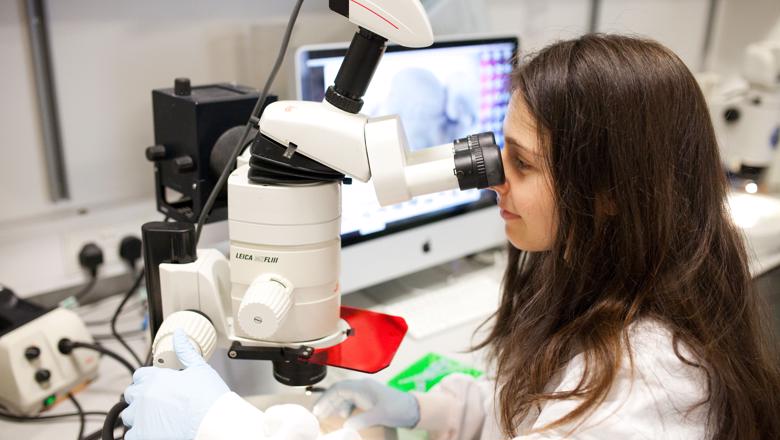
The Rise Of Regenerative Dentistry
Welcome to the fascinating world of dentistry, where technology is rapidly advancing and paving the way for exciting new breakthroughs. One such innovation that has captured the attention of dental professionals and patients alike is regenerative dentistry. This cutting-edge approach holds tremendous promise in transforming the field, offering hope for those seeking advanced solutions to restore oral health. In this blog post, we will delve into what exactly regenerative dentistry entails, how it works its magic, and why it’s gaining momentum as a game-changer in dental care. So fasten your seatbelts as we embark on a journey exploring the rise of regenerative dentistry!
What is Regenerative Dentistry?
Regenerative dentistry is a revolutionary approach that focuses on the regeneration of damaged or lost tissues in the oral cavity. Unlike traditional dental treatments, which often involve invasive procedures and artificial replacements, regenerative dentistry aims to stimulate the body’s natural healing mechanisms to restore and regenerate tissue.
This innovative field combines principles from various disciplines such as stem cell research, tissue engineering, and biomaterials science to achieve remarkable results. By harnessing the power of our own cells and biological processes, regenerative dentistry has the potential to revolutionize how we treat dental conditions like gum disease, tooth loss, and bone defects.
One key aspect of regenerative dentistry is using biocompatible materials and growth factors that promote tissue regeneration. These materials can be applied directly into the affected area or used in conjunction with techniques like guided tissue regeneration (GTR) or platelet-rich plasma (PRP) therapy.
Another exciting development within this field is stem cell therapy. Stem cells have incredible potential because they can differentiate into different types of tissues found in our bodies. In regenerative dentistry, mesenchymal stem cells are commonly used to repair damaged oral tissues by promoting new blood vessel formation, enhancing bone growth, and stimulating wound healing.
While still considered an emerging field within dentistry, regenerative techniques are already yielding impressive outcomes for patients worldwide. By harnessing the body’s innate ability to heal itself through advanced technology and scientific understanding, we are witnessing a paradigm shift towards more natural and sustainable approaches in dental care.
As researchers continue to explore new possibilities within this realm of dentistry, it’s clear that regenerative techniques hold great promise for providing long-lasting solutions while minimizing discomfort for patients. So whether you’re dealing with gum recession or dreaming of a more permanent solution for missing teeth – keep an eye out for how regenerative dentistry will enable your dentist to work their magic!
How Does Regenerative Dentistry Work?
Regenerative dentistry is an innovative approach to oral healthcare that focuses on restoring and regenerating damaged tissues in the mouth. But how exactly does this cutting-edge field work?
At its core, this harnesses the body’s natural healing abilities to promote tissue regeneration. This involves using biocompatible materials and advanced techniques to stimulate the growth of new cells, blood vessels, and connective tissues.
One common method used in regenerative dentistry is guided bone regeneration (GBR). GBR involves placing a membrane over a defect or extraction site to protect it from soft tissue invasion while allowing bone cells to regenerate. This technique has proven effective in promoting bone growth for dental implant placement.
Another key technique is platelet-rich fibrin (PRF), which uses concentrated platelets from the patient’s own blood to accelerate healing and enhance tissue regeneration. PRF can be used during tooth extractions, gum surgeries, and even for treating gum recession.
In addition to these techniques, advancements in stem cell research are also playing a crucial role in regenerative dentistry. Researchers are exploring ways to use stem cells derived from various sources like teeth or adipose tissue for repairing damaged oral tissues.
By leveraging these innovative approaches, it will offers several benefits such as faster healing times, reduced risk of complications, improved aesthetics and functionality of dental restorations.
With ongoing advancements in technology and research within the field of regenerative dentistry, we can expect even more exciting developments on the horizon. The future holds great promise for this transformative approach that aims not just at fixing problems but also at stimulating natural regeneration within our mouths.
Benefits of Regenerative Dentistry
Regenerative dentistry offers a range of benefits that are revolutionizing the field of dentistry. One major benefit is the ability to regenerate damaged or lost tooth structures, eliminating the need for artificial replacements such as dental implants or bridges. This not only improves aesthetics but also restores proper function and preserves natural teeth.
Another advantage of regenerative dentistry is its minimally invasive nature. Traditional dental procedures often require significant removal of healthy tooth structure in order to place restorations. However, regenerative techniques can stimulate the regeneration of new tissues, reducing the need for extensive drilling and preserving as much natural tooth structure as possible.
Furthermore, regenerative approaches promote faster healing and recovery time compared to traditional methods. The use of growth factors and biomaterials stimulates tissue regeneration and accelerates wound healing processes naturally occurring in our bodies.
In addition to these immediate benefits, it has long-term advantages as well. By restoring damaged tissues rather than replacing them with artificial materials, patients experience improved oral health over time. This can lead to a reduced risk of future complications such as infections or decay.
Moreover, regenerative techniques offer a more sustainable approach to dental treatment by minimizing reliance on synthetic materials like metal alloys or plastics commonly used in traditional restorative options.
The benefits provided by regenerative dentistry are promising not just for patients but also for dental professionals seeking innovative solutions that prioritize preservation and restoration over replacement. As technology continues to advance in this field, we can expect even greater advancements and improvements in patient care.
The Future of Dentistry: A Shift Towards Regeneration
The future of dentistry is evolving at a rapid pace, and one significant shift we are seeing is towards regenerative dentistry. This innovative approach aims to not only treat dental issues but also regenerate and restore damaged tissues and structures within the mouth.
Regenerative dentistry utilizes cutting-edge technologies and techniques to promote natural healing processes in the oral cavity. It focuses on harnessing the body’s own regenerative capabilities to repair tooth decay, gum disease, bone loss, and even replace missing teeth.
One area where regenerative dentistry shows great promise is in the field of stem cell therapy. Stem cells have the remarkable ability to differentiate into various types of cells found in our bodies, including those needed for dental regeneration. Researchers are exploring ways to use stem cells to regenerate damaged or lost dental tissues such as enamel, pulp tissue, and periodontal ligaments.
Another exciting development in regenerative dentistry is the use of growth factors. These biological molecules stimulate cellular activities involved in wound healing and tissue regeneration. By applying growth factors directly to affected areas, this will enable the dentists to enhance the body’s natural healing abilities and accelerate tissue repair.
Additionally, advancements in digital technology have revolutionized how regenerative procedures are planned and executed. Techniques like 3D imaging, computer-aided design (CAD), and 3D printing enable precise customization of implants or prosthetics for optimal fit and function.
The shift towards regenerative dentistry offers numerous benefits for patients. It promotes faster healing times compared to traditional treatments since it leverages the body’s inherent capacity for self-repair. Additionally, by preserving natural tissues instead of relying solely on artificial replacements like implants or bridges when possible, patients can maintain better oral health over time.
Moreover, in some cases ,regeneration eliminates need for invasive surgeries . This results enhances patient comfort during treatment,and reduced recovery periods postoperative .
Common Misconceptions About Regenerative Dentistry
While regenerative dentistry holds great promise for the future of dental care, there are still some misconceptions surrounding this innovative approach. Let’s debunk a few common myths:
1. It’s experimental and unproven: Contrary to popular belief, regenerative dentistry is not an experimental field. The techniques and technologies used in this approach have been extensively researched and developed over the years. Numerous studies have demonstrated their effectiveness in promoting tissue regeneration and improving oral health outcomes.
2. It’s only for severe cases: Regenerative dentistry is not limited to treating severe dental conditions or advanced gum disease. It can also be used as a preventive measure or for less severe issues like tooth decay or damaged enamel. By harnessing the body’s natural ability to heal itself, regenerative techniques offer benefits across a wide range of dental concerns.
3. It’s too expensive: While regenerative treatments may involve additional costs compared to traditional approaches, they can often provide long-term savings by reducing the need for repeated procedures or more invasive interventions down the line. Additionally, advancements in technology and increased adoption of regenerative techniques are likely to make them more affordable in the future.
4. It takes longer to see results: Although regenerative dentistry focuses on stimulating natural healing processes, it doesn’t necessarily mean that treatment times will be significantly prolonged. In fact, many patients experience faster recovery times due to reduced post-operative discomfort and improved tissue healing.
5. It’s not suitable for everyone: Regenerative dentistry can benefit individuals of all ages and backgrounds with various dental needs—whether you’re seeking cosmetic enhancements or addressing functional problems such as tooth loss or gum recession.
With advancements in technology enabling personalized treatment plans, the potential applications of regenerative dentistry continue to expand.
The Future Is Bright as we look ahead into the future of dentistry, it becomes clear that a shift towards regeneration is underway. In the world of dentistry, technology is rapidly advancing as the field of regenerative dentistry has the potential to revolutionize dental care.
